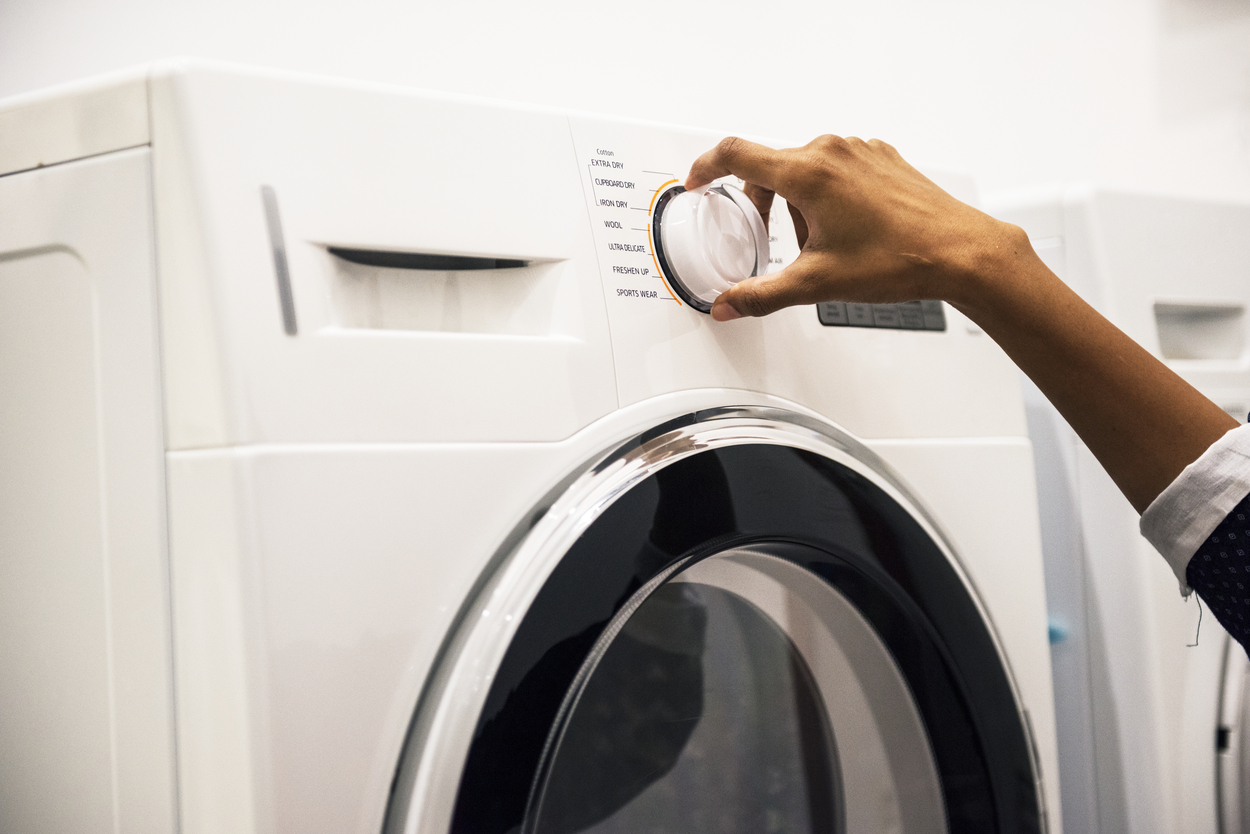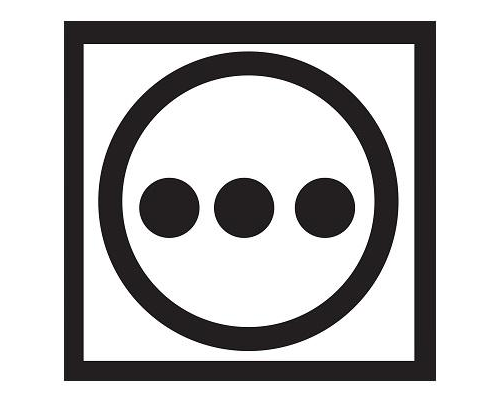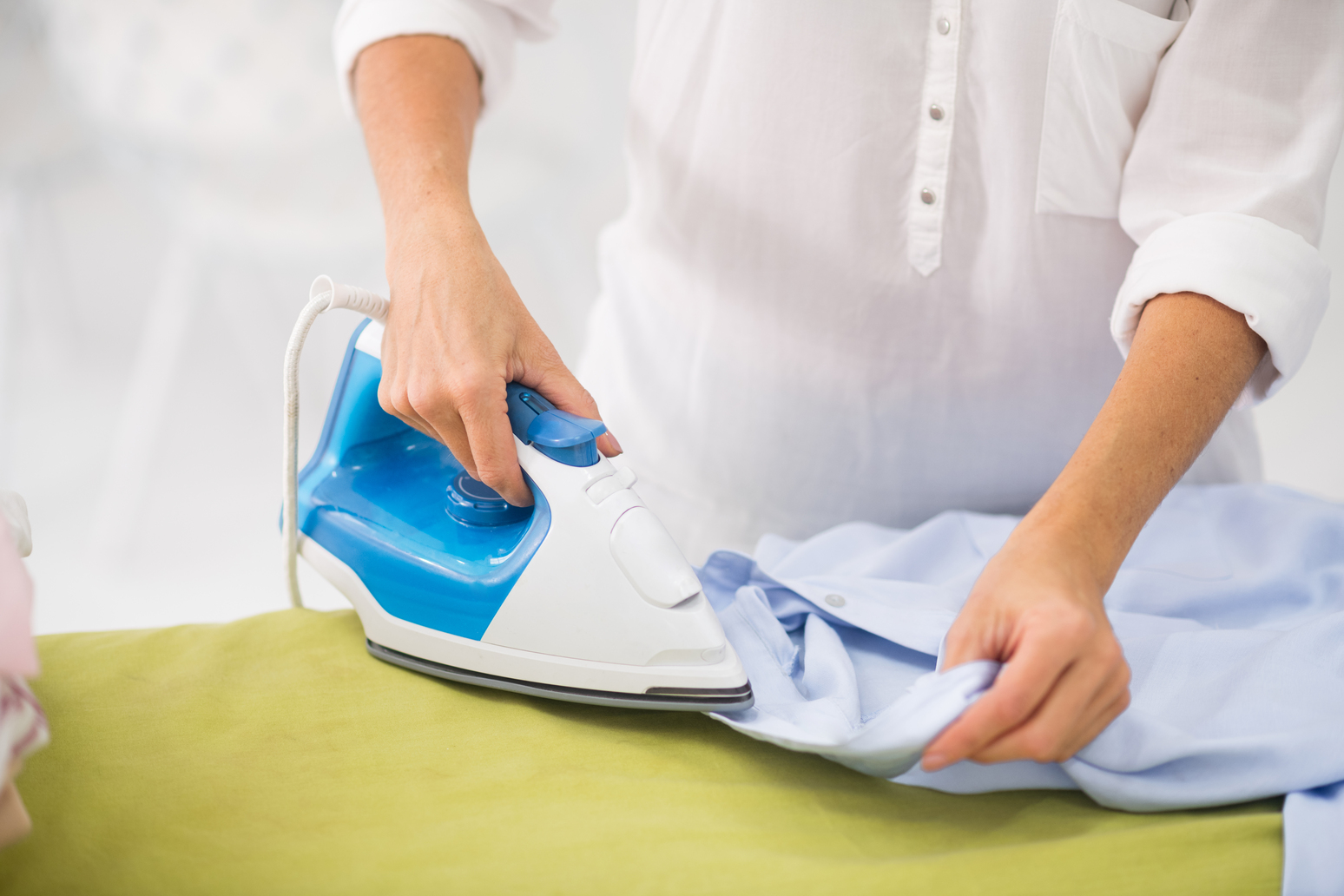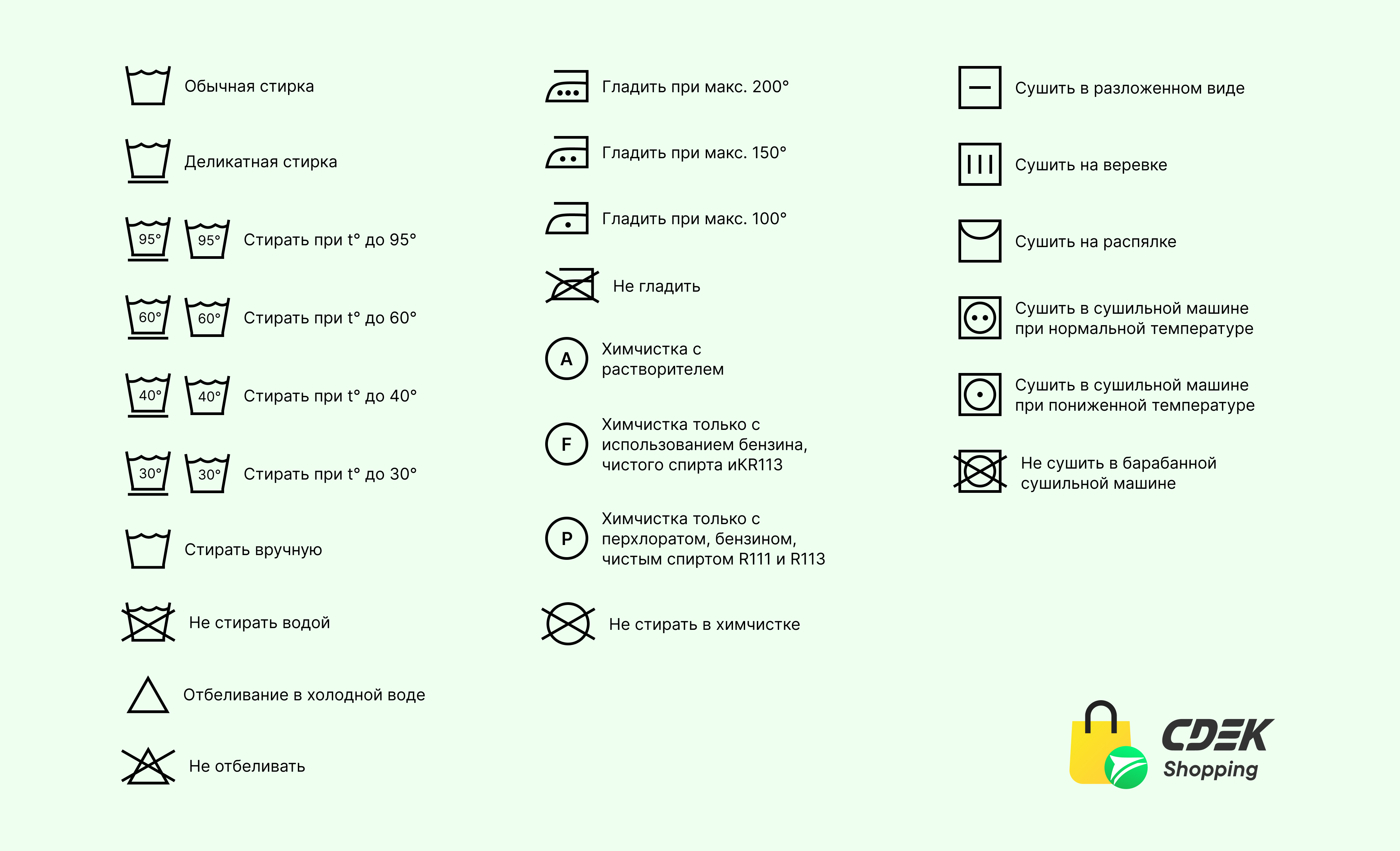Как правильно ухаживать за одеждой: расшифровываем символы
Ну, кто из нас не сталкивался с ситуацией, когда только что купленную красивую белую кофточку стираешь в стиральной машинке, а достаешь что-то непонятное серого цвета, да еще и меньше размера на два. Или, опаздывая на работу, хочется побыстрее прогладить офисную рубашку, а через секунду на ней расползается дырка!

В итоге, выброшенные деньги, испорченное настроение! А ведь всего этого можно было бы избежать, если бы выбрать правильный режим для стирки.
Учимся расшифровывать непонятные знаки на ярлычках (washing symbols)!
Стираем! Do the laundry!
Cotton wash – стирка изделий из хлопка
Delicate wash – деликатная стирка
Wool wash – стирка шерсти
Be careful! She wants to wash your lovely woolen dress. — Осторожно! Она хочет постирать твое любимое шерстяное платье.
Hand wash only – только ручная стирка
Do not tumble dry – не сушить в машине
We recommend hand wash only for this skirt. – Мы рекомендуем стирать эту юбку вручную.

Machine wash cold – машинная стирка в холодной воде
Machine wash warm – машинная стирка в теплой воде
Machine wash hot – машинная стирка в горячей воде
Wash-and-wear – не требуется сушить и гладить.
Отбеливаем!
Bleaching – отбеливание
Do not bleach – запрещено отбеливать
Non-chlorine bleach – использовать отбеливатель без хлора
Мы очень надеемся, что после этой статьи в вашей жизни больше не будет полинявших кофточек и слежавшихся платьев!
Если хотите первыми получать полезную информацию об английском языке – не забывайте подписываться на новые статьи!

All store bought clothes and fabrics (ready-to-wear garments as well as fabrics from the bolt) have these labels stitched on them. Unless the clothing is too precious, none pays any attention to them. Mostly at their own peril.
You really ought to read it diligently every time you make a purchase. Just imagine the horror if the shirt you bought for a Himalayan trekking ( one of the few clothes you packed) is dry clean only.
Knowledge of the basic care symbols is essential for a number of reasons like this. The details in the fabric tab and those symbols will tell you everything you need to know about the care and upkeep of your garment.
All about fabric care labels

The International care labeling code is based on 5 basic symbols.- Washtub (Washing), Triangle (Bleaching), Iron (Ironing), circle (Dry cleaning) and the square (Drying).
Modifications to these symbols tell a whole story of how you should care for the cloth in question. You generally do not ignore it. Sometimes you have to but that is another story altogether. (Like when you try to add textile texture or when you have to shrink clothes
One thing general about these symbols is that if there is a cross across any of the symbols, that denotes the cancellation or negation of the process.
Fabric care labels for different kinds of fabrics
WOOL FABRIC CARE SYMBOLS

The wool fabric care label tells you to wash in mild temperature, preferably hand wash, do not machine dy, do not wring and to dry flat.
SILK FABRIC CARE SYMBOLS

Learn more about washing and caring for silk clothes here
The silk fabric care label tells you to wash in mild temperature, preferably hand wash, do not machine dy, do not wring and to iron in mild temperature.
NYLON FABRIC CARE SYMBOLS

The nylon fabric care label tells you to wash in warm temperature, tumble dry in low heat and iron at mild temperature.
LYCRA FABRIC CARE SYMBOLS

The nylon fabric care label tells you to Machine wash in any temperature, tumble dry in low heat and iron at mild temperature.
Read more on caring for Lycra spandex clothes here.
POLYESTER FABRIC CARE SYMBOLS


Learn more about polyester fabric care here
The polyester fabric care label tells you to wash in warm temperature, tumble dry in low heat and iron at mild temperature.
LINEN FABRIC CARE SYMBOLS

Learn more about Linen fabric care here
The Linen fabric care label tells you to wash in any temperature, dry in low heat and steam iron.
COTTON FABRIC CARE SYMBOLS

The cotton fabric care label tells you to wash in any temperature, tumble dry in any setting and iron at suitable temperature.
RAYON FABRIC CARE SYMBOLS

Learn more about Washing rayon fabric here
The rayon fabric care label tells you to wash in mild temperature, avoid wringing or tumble dry in machine and recommends line drying and steam iron.
Laundry care symbols
Some of the most common laundry care symbols are as in the table below

General guidelines for these clothing care symbols
☝ If no water temperature or dryer setting is mentioned, it is safe to use any setting, even hot water and hot tumble drying.
☝ If no ironing instructions are given, it should not be necessary to iron the garment. If ironing is needed to preserve the garment’s appearance, instructions must be given. The label need not mention any ironing temperature if the regular use of a hot iron will not harm the garment.
☝ If bleach is not mentioned, any type of bleach may be used, when needed. If bleach is unsafe, then the label must say “no bleach” or “do not bleach.” If non-chlorine bleaches are safe, then the label should say “use only non-chlorine bleach when needed.”
☝ If no warnings are given, no adjustments are needed to the care process listed on the label.
☝ If the label says do not dry-clean, don’t assume you can. The type of dry-cleaning solvent does not have to be specified if all are safe. If not, the particular solvent to be used should be listed.
☝ A “Dry-clean” label means you can use a coin-operated machine.
☝ “Professionally dry-clean, short cycle, tumble warm” means you cannot since a coin-operated machine could not be adjusted to follow the process.
Ref : https://digitalcommons.unl.edu.
Washing care symbols for Laundry


1. This symbol means that you can launder this in a washing machine with water, detergent or soap and maximum agitation.

2. This means that the article should not be washed. This usually accompanies symbols for drycleaning care.

3. Machine wash in Permanent Press setting. This is intended for Permanent Press fabrics which have been treated with chemicals to ensure they foil wrinkles and retain their original shape.This will have a cold rinse before spinning at a reduced time. If a piece of clothing is permanent press, it usually means that you shouldn’t iron it.

4. The two lines under the bucket denote that the fabric should be washed in a gentle or delicate setting only. This is usually used for beaded sequined fabrics, wool, silk etc which needs gentle agitation.

5. A hand inside the bucket denotes that the fabric is suitable only for handwashing.
6. Two broken lines under the bucket means that the fabric is to have the minimum agitation. The number inside the bucket denotes the initial maximum temperature setting.
7. One broken line under the bucket means that the fabric is to have a medium agitation only.
8. When there are no lines under the bucket it means the maximum agitation is ok.
The dots inside the bucket (like the numbers) will be representing the initial maximum temperature setting for the fabric.
One Dot – 30ºC
Two Dots – 40ºC
Three Dots – 50ºC
Four Dots – 60ºC
Five Dots – 70ºC
Six Dots – 95ºC

Drying care symbols for fabrics


1. This symbol indicates Drying.
2. This indicates that you should not use the washing machine for drying the fabric.

3. Drip dry – this indicates that the garment should be hung without wringing, hand shaping or smoothing.

4. Dry in the flat – This is given for clothes/ fabrics which may stretch if hung on a line; they should be laid horizontally in a rack for drying.

5. Dry in the shade – This is given for clothes which may fade or get damaged in direct sunlight. This is usually combined with other symbols to give full directions fro drying.

6. Hang dry – which means that you can hang them on a clothesline to dry.

7. Do not tumble-dry symbol

10, 11, 12. Heat settings for drying. One dot is low heat, two dots – medium heat and three dots – high heat.

13. Do not use heat in drying.
Ironing Symbols

1.This shape of an iron box indicates that the garment is ironable at any suitable temperature.
2. This denotes the garment is not suitable for ironing.
3. Garment is to be ironed at a low heat setting.
4. Garment is to be ironed at a medium heat setting.
5. Garment is to be ironed at a high heat setting.
6. This symbol indicates that you cannot use steam on this cloth though it can be ironed.
Drycleaning symbols

1. This indicates that the garment/fabric should be drycleaned at any temperature, with any solvent and any moisture.
2. Denotes the fabric should not be drycleaned.
3, 4 & 5 Denotes the solvent to be used in dry cleaning. F indicates a flammable petroleum solvent (not to be machine dry cleaned)- this is for delicate fabrics. P indicates any solvent excluding trichloroethylene (can be machine drycleaned). A denotes that you can use any dry cleaning solvent.
6,7,8 &9 Denotes other restrictions.
Bleaching Care symbols for laundry

1. This indicates that you can use any type of bleach on the fabric.
2. This denotes that the garment should not be drycleaned.
3. This symbol indicates that you should only use non-chlorine bleach on the garment. The ingredient list of bleach will clearly say whether it contains chlorine or not.
Related posts : Common technique for stain removal with homeremedies ; Pro tips for fabric care
Download Article
Download Article
In a way, your clothes are an extension of who you are. While it feels great to slip into a stylish, comfortable outfit, sliding into a wrinkly shirt or pair of pants just doesn’t feel great. Don’t worry. While it takes a bit of extra effort, it’s easy to both improve and optimize your laundry routine. Whether you’re snuggling up on the couch for a movie night or heading out to the club with some friends, we’ve got lots of tips to help keep all your clothes in great shape.
Tips for Taking Care of Your Clothes
- Separate your clothes into dark, light, and white piles before washing.
- Check the care labels for the washing temperature and cycle to use.
- Remove stains as soon as they happen.
- Dry your clothes in small batches, or hang them up to air dry.
- Hang your clothes on wooden or padded hangers.
-
It may be tempting to toss all your clothes into the washer at once, but this isn’t always the best option. Instead, sort your clothes by color, as well as by how dirty they are. Also, divide certain clothes, like loose knits and delicates, into their own separate load. It may seem a bit tedious at first, but sorting your laundry helps keep your garments in great shape.[1]
- Coloring sorting prevents any unwanted dye transfer during the wash cycle. Sorting clothes by dirtiness stops any extra grime from sticking to your less-soiled clothes.
- For instance, you could divide your laundry into 4 color piles: whites, pastels and medium-toned garments, brights, and darks.
- You might also separate your really dirty clothes from your less soiled ones.
- Experts also suggest washing towels, fuzzy shirts, and fuzzy robes in their own load, since they tend to give off lots of lint.
Advertisement
-
Care labels walk you through the best laundry options for your clothes. Check for a soft tag along the inside of your garment—it’ll probably have a series of different symbols on it. These shapes suggest the best wash temperature and cycle to use, as well as any other precautions you should take.[2]
- The bucket of water symbol lets you know if and how you can wash your garment.
- An open triangle means you can bleach the garment, while a solid, crossed out triangle means you shouldn’t use bleach.
- A square with a circle inside represents specific tumble drying instructions.
- A symbol of an iron means that the garment is safe to iron.
-
Stains are easier to remove when they haven’t set into the fabric. Experts advise blotting the stain with a clean sponge instead of rubbing it in, since rubbing a stain will only force it deeper into the fabric. Laundry experts also suggest pretreating the stain before tossing it into the wash.[3]
- If you spilled coffee on your favorite shirt, soak the stained fabric in cold water and pretreat it with detergent or stain remover. Then, wash the garment with sodium hypochlorite bleach, if the care label allows it.[4]
- To treat ink stains, dip a clean sponge in rubbing alcohol and dab it around and over the stain. Flip the garment over, setting the stain face-down on a sheet of clean paper towels. Dab more rubbing alcohol along the back of the stain, replacing the paper towels as needed. Then, rinse out the stain as best as you can, and wash the garment as you normally would.
- For fresh blood stains, soak the clothing item in a container of cold water, and wash it as usual. For dried blood stains, soak the garment in a basin of warm water mixed with an enzyme-rich product. Then, launder the clothing item as usual.
- To care for light mud stains, spread a powder detergent paste over the soiled area and wash it as you normally would. For heavier mud stains, pretreat the garment in a basin of water mixed with a detergent or enzyme-rich product. Then, add it to your next load of laundry.
- If you spilled coffee on your favorite shirt, soak the stained fabric in cold water and pretreat it with detergent or stain remover. Then, wash the garment with sodium hypochlorite bleach, if the care label allows it.[4]
Advertisement
-
Experts recommend a cold water cycle in the washer, along with a permanent press cycle in the tumble dryer. If your shirts have obvious pit stains, wash them with an oxygen-based bleach.
- In general, cold water is better for your clothes, and may keep them from shrinking and fading over time.[5]
- In general, cold water is better for your clothes, and may keep them from shrinking and fading over time.[5]
-
Experts suggest washing jeans once every 3 wears.[6]
Turn your jeans inside-out to protect the color, and wash them in a gentle, cold water cycle. Hang up your jeans to air-dry once they’re out of the washer.[7]
Advertisement
-
Unfortunately, a run through your washer may damage the elastic, if your garment has an elastic band. Instead, hand-wash your garments in a basin of cool water with 1 tsp (4.9 mL) of gentle detergent.[8]
Then, delicately wring out any leftover water, and drape the clothing item on a drying rack.- “Delicates” include garments like your intimates, swimsuits, and underwear.
-
Treat any stains ahead of time, and toss your shirt into a cold water cycle. Once the wash cycle is done, shake out the shirt to get rid of any wrinkles. Then, press your shirt or air-dry it on a hanger.[9]
- Unfortunately, tumble dryers will shrink and damage your shirt over time.
- Experts recommend ironing dress shirts straight out of the washer. In general, iron the collar first, then the cuffs, and then the body of the shirt.
Advertisement
-
Materials like rayon, lycra, silk, wool, nylon, thin knits, and spandex all qualify as delicate materials, along with hand-knitted and hand-crocheted garments. Try not to wash these clothing items unless they’re really dirty, and always check the care label before cleaning them. Once these garments are all clean, stash them in a cool, roomy area.[10]
- For instance, you can hang delicate jackets, dresses, and shawls on padded hangers, while knitwear can be folded and stored flat.
- Always take extra-fine silk, leather, furs, feathers, and suede to a professional cleaner.
-
Also, larger laundry loads tend to look wrinklier once you pull them out. To prevent any extra complications, dry a small amount of clothes that can move and tumble easily in the dryer.[11]
- Air drying is a great alternative to traditional tumble drying. It’s a lot less hard on your clothes, and it’s better for the environment, too!
Advertisement
-
Instead, check your care label to see which fabric your garment is made out of. Then, use the designated fabric setting on your iron, if it has one.[12]
- For instance, silk and cotton need to be ironed while the garment is damp, while nylon or polyester should be ironed mostly dry.
- Some irons might come with basic temperature settings, like “cool,” “low,” “warm,” or “hot.” For example, fabrics like acetate, nylon, polyester, and acrylic need a cool iron, wool and silk need a warm iron, and cotton needs a hot iron.
- Ironing your clothes correctly helps keep them in great shape.[13]
-
Wooden hangers work well with coats, pants, jackets, and shirts, while padded hangers provide extra support to garments made with delicate materials, such as silk.[14]
Unfortunately, wire hangers don’t provide a lot of support, and may change the shape of your garment eventually.[15]
- Suit hangers are a great option for both suits and certain jackets.
- Hangers with clips are great for skirts.
- Always hang up garments that tend to get wrinkly, like dresses, nice shirts, and suits.
- Felt hangers are another sturdy, safe option for your clothes.[16]
Advertisement
-
Instead, slip your out-of-season garments into plastic boxes, keeping them in a cool, dark, and dry spot.[17]
- If you’re storing garments made with wool or other natural fibers, don’t seal the plastic bin completely. Instead, give your clothes a little room to breathe.
-
Tears, snags, and rips can pop up when you least expect them, but they don’t have to be a death sentence for your favorite garments. Shop for a sewing kit online, or pick one up from a big-name retail store. When the time comes, mend your clothes with a sewing needle and a spool of thread that matches your garment.
- Sewing kits usually come with small spools of thread, sewing needles, a small pair of scissors, and other odds and ends. You can pick up a basic sewing kit for less than $10.
- If you aren’t a fan of sewing, fix up your tears and snags with mending glue or iron-on mending fabric instead.[18]
Advertisement
-
Soak your jewelry in the mixture, lightly scrubbing away any dirt and grime with a soft brush. Don’t use really hot or cold water—extreme temperatures can damage certain gemstones. Also, try not to soak any porous gemstones, like opals, turquoise, or pearls.
- If any of your jewelry is damaged or broken, take it to a jeweler instead of trying to fix it at home.
-
Before putting them away, clean off your leather shoes with a clean cloth, and wipe away any dust collecting on your suede shoes. Once you’re done wearing them, experts suggest sliding shoe trees into your footwear, so they keep their shape.
- Shoe trees are adjustable, and fit snugly between a shoe’s toe and heel.
Advertisement
Add New Question
-
Question
What’s the best way to store shirts on shelves?
Robert Rybarski is an Organizational Specialist and Co-Owner of Conquering Clutter, a business that customizes closets, garages, and plantation shutters to ensure organized homes and lifestyles. Robert has over 23 years of consulting and sales experience in the organization industry. His business is based in Southern California.
Organizational Specialist
Expert Answer
A lot of shelving sections don’t have enough space in them height-wise, so if you have to stack five to eight shirts on top of each other, it’s always a problem pulling the bottom one out because it tends to take the other ones with them. The best thing to do would be to get more adjustable shelves or some smaller cubbies that would fit the shirts and then you can stack up to 3-4 per shelf or cubbie at the most.
-
Question
What’s the best way to store underwear?
Robert Rybarski is an Organizational Specialist and Co-Owner of Conquering Clutter, a business that customizes closets, garages, and plantation shutters to ensure organized homes and lifestyles. Robert has over 23 years of consulting and sales experience in the organization industry. His business is based in Southern California.
Organizational Specialist
Expert Answer
There are drawer dividers that you can get that would separate your drawer into sections. Then you can put your underwear into the different sections, and maybe categorize them or organize them by color. There are also dividers you can get that expand. You pull a center partition out and it opens up that square area for larger items, like socks.
-
Question
How should I store my ties in my closet?
Robert Rybarski is an Organizational Specialist and Co-Owner of Conquering Clutter, a business that customizes closets, garages, and plantation shutters to ensure organized homes and lifestyles. Robert has over 23 years of consulting and sales experience in the organization industry. His business is based in Southern California.
Organizational Specialist
Expert Answer
You can get a tie rack to drape your ties on. Another option is to dedicate a small drawer with dividers in it to your ties. You can roll your ties up and put them in the dividers.
See more answers
Ask a Question
200 characters left
Include your email address to get a message when this question is answered.
Submit
Advertisement
Video
-
Use a fabric shaver to remove any pills and bobbles from your garments.[19]
-
Slip your delicate garments into a mesh garment bag before tossing them in the washer.[20]
-
Before running a load of wash, check that all zippers are closed and secure.[21]
Show More Tips
Thanks for submitting a tip for review!
Advertisement
References
About This Article
Article SummaryX
To take care of your clothes, wear an apron when you’re cooking so you don’t get them soiled or stained. If you do drop or spill things on your clothes, treat the stain immediately by dabbing ice water or seltzer water on it so it doesn’t set. Additionally, remove your clothes from the dryer as soon as it stops, and hang them or fold them right away to prevent wrinkles. You should also watch for loose strings or threads on your clothes, and snip them so they don’t accidentally pull or snag, which can lead to more pulled-out stitches. To learn how to wash and dry your clothes so they’ll last longer, keep reading!
Did this summary help you?
Thanks to all authors for creating a page that has been read 337,744 times.
Did this article help you?
From Wikipedia, the free encyclopedia
A laundry symbol, also called a care symbol, is a pictogram indicating the manufacturer’s suggestions as to methods of washing, drying, dry-cleaning and ironing clothing. Such symbols are written on labels, known as care labels or care tags, attached to clothing to indicate how a particular item should best be cleaned. While there are internationally recognized standards for the care labels and pictograms, their exact use and form differ by region. In some standards, pictograms coexist with or are complemented by written instructions.
GINETEX, the France-based European association for textile care labelling, was formed in 1963 in part to define international standards for the care and labelling of textiles.[1] By the early 1970s, GINETEX was working with ISO to develop international standards for textile labelling, eventually leading to the ISO 3758 standard, Textiles – Care labelling code using symbols.[2][3] ISO 3758 was supplemented in 1993, revised in 2005 and again in 2012 and 2023 with reviews of the standard held on a five-year cycle.[2]
In March 1970, the Canadian Government Specifications Board published 86-GP-1, Standard for Care Labelling of Textiles,[4] which promoted a symbol-based textile care labelling system in which symbols were colored: green indicated «no precautions are necessary», yellow indicated «some caution is necessary», and red indicated «prohibited». Publication 86-GP-1 was revised several times over the following three decades; the most noteworthy change was in 1979, when temperatures changed from Fahrenheit to Celsius, and any additional instructions were to be added in text, in both English and French. In 2003, the system was withdrawn in favor of a black-and-white symbol-based system harmonized with North American and international standards.[5][6] The inclusion of care symbols on garments made or sold in Canada has always been voluntary; only fabric content labels are mandatory (since 1972).
In 1996, in the United States, ASTM International published a system of pictorial care instructions as D5489 Standard Guide for Care Symbols for Care Instructions on Textile Products, with revisions in 1998, 2001, 2007, 2014, and 2018.[7][8]
American Cleaning institute developed and published their guide to fabric care symbols.[9]
Additional textile care labelling systems have been developed for Australia, China, and Japan.[6] Worldwide, all of these systems tend to use similar pictograms or labelling to convey laundry care instructions.[10] As of 2021, the pictograms are not encoded in Unicode standards, because these symbols are not in the public domain across various countries, and are copyrighted.[11]
The care label describes the allowable treatment of the garment without damaging the textile. Whether this treatment is necessary or sufficient, is not stated. A milder than specified treatment is always acceptable. The symbols are protected and their use is required to comply with the license conditions; incorrect labelling is prohibited. A bar below each symbol calls for a gentler treatment than usual and a double bar for a very gentle treatment.
A stylized washtub is shown, and the number in the tub means the maximum wash temperature (degrees Celsius). A bar under the tub signifies a gentler treatment in the washing machine. A double bar signifies very gentle handling. A hand in the tub signifies that only (gentle) hand washing (not above 40 °C) is allowed. A cross through washtub means that the textile may not be washed under normal household conditions. In the North American standard, dots are used to indicate the proper temperature range.
In the European standard, the level of wash agitation recommended is indicated by bars below the wash tub symbol. Absence of bar indicates a maximum agitation (cotton wash), a single bar indicates medium agitation (synthetics cycle) and a double bar indicates very minimal agitation (silk/wool cycle).[12] The bar symbols also indicate the level of spin recommended with more bars indicating lower preferred spin speed.[12]
-
Washing symbol
-
Wash at or below 30 °C (86 °F) (US, 1 dot, ●)
-
Wash at or below 40 °C (104 °F) (US, 2 dots, ●●)
-
Wash at or below 50 °C (122 °F) (US, 3 dots, ●●●)
-
Wash at or below 60 °C (140 °F) (US, 4 dots, ●●●●)
-
Hand wash
-
Do not wash
An empty triangle (formerly lettered Cl) allows the bleaching with chlorine or non-chlorine bleach. Two oblique lines in the triangle prohibit chlorine bleaching. A crossed triangle prohibits any bleaching.
-
Bleaching symbol (allowed for both chlorine and non-chlorine bleach)
-
Bleaching with chlorine allowed (obsolete)
-
Non-chlorine bleach when needed
-
Do not bleach
-
Do not bleach
A circle in the square symbolizes a clothes dryer. One dot requires drying at reduced temperature and two dots for normal temperature. The crossed symbol means that the clothing does not tolerate machine drying. In the US and Japan, there are other icons for natural/line drying.
-
Tumble drying symbol
-
Tumble drying (low temperature)
-
Tumble drying (normal)
-
Do not tumble dry
-
Drying symbol
-
Line dry
-
Dry flat
-
Drip dry
-
Dry in the shade
-
Line dry in the shade
-
Dry flat in shade
-
Drip dry in shade
The iron with up to three dots allows for ironing. The number of dots are assigned temperatures: one prescribes 110 °C (230 °F), two for 150 °C (302 °F) and three for 200 °C (392 °F). An iron with a cross prohibits ironing.
-
Ironing symbol
-
Iron at low temperature
-
Iron at medium temperature
-
Iron at high temperature
-
Do not iron
Professional cleaning
[edit]
A circle identifies the possibilities of professional cleaning. A bar under the symbol means clean gently, and two bars means very gentle cleaning.
The letters P and F in a circle are for the different solvents used in professional dry cleaning.
-
Professional cleaning symbol
-
Dry clean, hydrocarbon solvent only (HCS)
-
Gentle cleaning with hydrocarbon solvents
-
Very gentle cleaning with hydrocarbon solvents
-
Dry clean, tetrachloroethylene (PCE) only
-
Gentle cleaning with PCE
-
Very gentle cleaning with PCE
-
Do not dry clean
The letter W in a circle is for professional wet cleaning.
-
Professional wet cleaning
-
Gentle wet cleaning
-
Very gentle wet cleaning
-
Do not wet clean
- ^ «Who We Are». ginetex.net. GINETEX. Retrieved 25 April 2021.
- ^ a b ISO 3758:2012 — Textiles — Care labelling code using symbols.
- ^ «Japan adopts the GINETEX textile care labelling symbols» (Press release). International Apparel Foundation. 21 June 2016. Retrieved 25 April 2021.
- ^ Standard for Care Labelling of Textiles: 86-GP-1, Canadian Government Specifications Board, Department of Supply and Services; Ottawa: March 1970.
- ^ «Guide to Apparel and Textile Care Symbols». IC.GC.ca. Office of Consumer Affairs.
- ^ a b «Care Label Recommendations» (PDF). Intertek. 2019. Retrieved 25 April 2021.
- ^ «ASTM D5489: Standard Guide for Care Symbols for Care Instructions on Textile Products». West Conshohocken, Pennsylvania: ASTM International. doi:10.1520/D5489-18. Retrieved 25 April 2021.
- ^ Ortiz, Gerald (5 August 2020). «Care Tag Labels Decoded – What Do Those Laundry Symbols Mean?». Heddels. Retrieved 25 April 2021.
- ^ «Laundry Basics | The American Cleaning Institute (ACI)». www.cleaninginstitute.org. Retrieved 2022-06-10.
- ^ «Caring About the Consumers Beyond the Label» (PDF). Intertek. 2014. Retrieved 20 April 2014.
- ^ «Laundry care symbols in Word, Excel and PowerPoint». Office Watch. 25 March 2019. Retrieved 25 April 2021.
- ^ a b «Care Symbols». ginetex.net. GINETEX. Retrieved 2018-03-21.
- GINETEX: The International Association for Textile Care Labelling-Care Symbols
- ISO 3758:2012 — Textiles — Care labelling code using symbols
- The revised Canadian standard
- Swedish care symbols
- United States care symbols
- US, Japanese, and UK woven washing label symbols
- Ярлыки стирки
- Отбеливание
- Отжим и сушка
- Глажка
- Химчистка
- Рекомендация по уходу за 100% хлопком
- Общие рекомендации
- Таблица обозначений на ярлыках одежды

Ярлыки на одежде выполняют важную функцию: изображенные на них символы служат мини-руководством по уходу за изделием. Небольшой квадратик, вшитый в одежду, передает всю необходимую информацию для покупателя: из какого материала изготовлена вещь и как за ней следует ухаживать, чтобы не испортить.
Каждый этап ухода за одеждой и бельем обозначается группами знаков на ярлыках:
- режимы стирки обозначены фигуркой в виде таза и могут содержать числовые обозначения, эквивалентные допустимой температуре воды;
- кружок содержит информацию о химчистке: стандарты и условия, по которым ее можно производить;
- утюг на ярлыке – значок глажки белья, зная расшифровку которого, можно не бояться испортить ткань;
- квадрат обозначает этапы барабанного отжима и сушки;
- треугольник на ярлыке подскажет можно ли отбеливать вещь специальными средствами.
Разберем каждую группу символов подробнее.
Ярлыки стирки

Перед тем как отправить свой новенький джемпер в барабан машинки, внимательно изучите значение ярлыка на нем. Символы для стирки на ярлыках представлены в виде таза:
Стирка разрешена, особые условия отсутствуют. Вы можете выставить нужную температуру в зависимости от степени загрязненности одежды: чем сильнее загрязнения, тем выше температура воды.
Производитель советует стирать изделие вручную. Как правило, такой знак можно встретить на платье из шелка, шерстяных пальто, брюках из экокожи.
Бережная стирка при температуре не выше 30 градусов. На таком режиме можно стирать одежду из деликатной ткани, например, платье из сатина.
Стирайте в воде при температуре 40 градусов. Такая температура считается наиболее благоприятной для стирки большинства видов тканей.
Допустима стирка при 50 градусах. Отлично подходит для детских вещей, мягких игрушек и другой загрязненной одежды.
Стирка при 60 градусах подходит для джинсов, постельного белья. При такой температуре воды многие производители также рекомендуют стирать хлопок.
Стирка сильно загрязнённых вещей, рабочей формы, постельного белья, полотенец в горячей воде.
Применяется в целях дезинфекции, например, одежды для новорожденных. Процесс очень схож с кипячением: вода нагревается до 95 градусов.
Вещь стирать нельзя. Такие символы чаще всего можно увидеть на ярлыках одежды из кожи или меха.
Отбеливание

Значки отбеливания на ярлыках одежды выглядят следующим образом:
Не отстирывается пятно с любимого платья? Воспользуйтесь отбеливающим средством: значок в виде треугольника означает, что его применение разрешено.
Будьте внимательны! Отбеливатель не должен содержать хлор: на рынке специальных средств для удаления пятен и отбеливания таких вариантов достаточно много.
Зачеркнутый треугольник на ярлыке предостерегает: применение отбеливателей строго запрещено производителем.
Отжим и сушка

Обозначения отжима и сушки изображены на ярлыке в форме квадрата:
Отжим в стиральной машине разрешается.
Сушка и отжим в стиральной машине запрещены. Особенно актуально для нарядных тканей, инкрустированных бусинами, стразами и другими декоративными элементами.
Сушка в стирально-сушильной машине разрешена при невысокой температуре. Некоторые материалы могут давать усадку или деформироваться под воздействием высоких температур во время сушки, например, синтетика.
Сушка разрешена при средней температуре. Такой режим сушки подходит для полотенец или хлопкового постельного белья.

Кружок в квадрате с тремя точками внутри можно встретить на детской одежде: сушка при высокой температуре разрешена.
Допускается отжим, а также сушка холодным воздухом.
Если вы видите на бирке такой значок, значит барабанная сушка запрещена. Сушите белье естественным образом.
Сушите постиранную вещь в тени. Этот элемент можно увидеть на бирке яркой цветной футболки, которая боится выгорания на солнце.
Необходимо сушить вещь вертикально без прямых лучей солнца. В случае попадания солнечных лучей белая блузка может пожелтеть, а цветная одежда выгореть.
Рекомендована сушка в горизонтальном положении. Чтобы вещь не деформировалась под тяжестью собственного веса, сушите ее на горизонтальной поверхности сушилки. Таким образом можно сушить изделия из трикотажа.
Знак горизонтальной сушки без отжима и прямого попадания солнечных лучей.
Рекомендована вертикальная сушка без отжима.
Необходима вертикальная сушка без отжима в тени.
Всегда обращайте внимание есть ли на ярлыке одежды полосы под квадратом: так, одна полоска означает, что требуется деликатный режим отжима и сушки. Две полоски под квадратом сообщают: допускается сушка при максимальной температуре 40 градусов.
Это значок деликатного отжима руками без скручивания.
Глажка

Стирка, отжим и сушка – важнейшие этапы по уходу за вещью. Остаётся погладить, чтобы придать ей первоначальный лоск. А при каких условиях это лучше делать подскажут значки ниже:
Глажка при высокой температуре: режим отлично подойдет для белья из хлопка.
Максимальная температура нагрева – 110 градусов. Преимущественно встречается на нейлоновых, капроновых и других синтетических вещах. К таковым, например, относится топ из полиамида.
Также часто можно встретить на этикетке синтетических изделий. Выставляем температуру поверхности утюга не выше 150 градусов.
Глажка изделия при температуре 200 градусов. Такой значок часто встречается на льняных и хлопковых вещах.
Отпаривание вещи запрещено. Под такой запрет попадают шерсть, мех, полиэстер и некоторые другие виды ткани. Обратите внимание: знак запрещает отпаривание, но не глажку.
Гладить запрещено. Чаще такой значок присутствует на верхней одежде, вещах из деликатной ткани, например вискозы, или инкрустированных большим количеством декоративных элементов, например пайеток или камней.
Химчистка

Профессиональная чистка осуществляется на специально оборудованном предприятии и в соответствии с технологическими документами. Такая чистка бывает двух видов: мокрая и сухая. Ниже приведены знаки на ярлыках одежды, которые адресованы производителем сотруднику химчистки. Их расшифровка означает следующее:
Разрешается стандартная сухая химчистка с применением растворителей.
Сухая химчистка без использования растворителя трихлорэтилена. Разрешены растворители: перхлорэтилен и углеводород.
Сухая химчистка: разрешается использование растворителей трихлорэтан и углеводород.
Аквачистка – щадящая чистка вещей при помощи воды с применением моющих добавок. Чистка по международному стандарту IEC 456. Таким образом чистят кожаные и замшевые изделия.
Допускается короткая программа очистки.
Только сухая чистка.
Допускается химчистка с паром.
Чистка химическими растворителями запрещена. Можно встретить на шелковых и атласных комплектах.
Мокрая чистка запрещена.
Рекомендация по уходу за 100% хлопком

Используя изображения выше, попробуйте описать рекомендации по уходу за хлопковой вещью.
Давайте проверим: ручная стирка без использования отбеливателей, отжим и барабанная сушка запрещены. Рекомендована вертикальная сушка и глажка при температуре поверхности утюга 200 градусов.
Общие рекомендации
Не отчаивайтесь, если на одежде нет этикетки или ярлыка. Для этого случая существуют общие рекомендации по стирке, сушке и глажке:
- Всегда сортируйте белье по цвету перед стиркой: один цветной носок, случайно оказавшийся в барабане, безвозвратно окрасит светлый материал при высокой температуре.
- Помните, что барабанная сушка подходит далеко не для каждой ткани. Если есть сомнения, лучше не рисковать: сушите белье естественным способом.
- Пользуйтесь отбеливателем, не содержащим хлора.
- Вещи из деликатной ткани, шерсти или экокожи, а также с пайетками, бахромой и другими декоративными элементами, лучше стирать руками.
- Гладьте с осторожностью синтетические материалы, не подвергая их высоким температурам.
- Если вещь не сильно загрязнена, стирайте ее в прохладной воде.
Таблица обозначений на ярлыках одежды
Если вы хотите сохранить информацию про значки у себя в телефоне, то смело делайте скриншот данной таблицы. Вы в любой момент сможете быстро найти любое обозначение ярлыков одежды в ней.

От небрежного отношения одежда часто приходит в негодность раньше положенного срока. Символы на этикетках – это зашифрованная инструкция от производителя для правильного ухода за вещью. Всегда изучайте обозначения на ярлыках и сохраняйте бирки в процессе использования.
Соблюдая простые рекомендации по стирке, сушке и другим этапам ухода, вы обеспечите своему гардеробу долгую жизнь.















